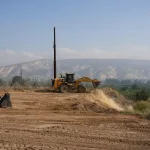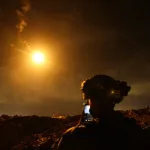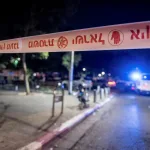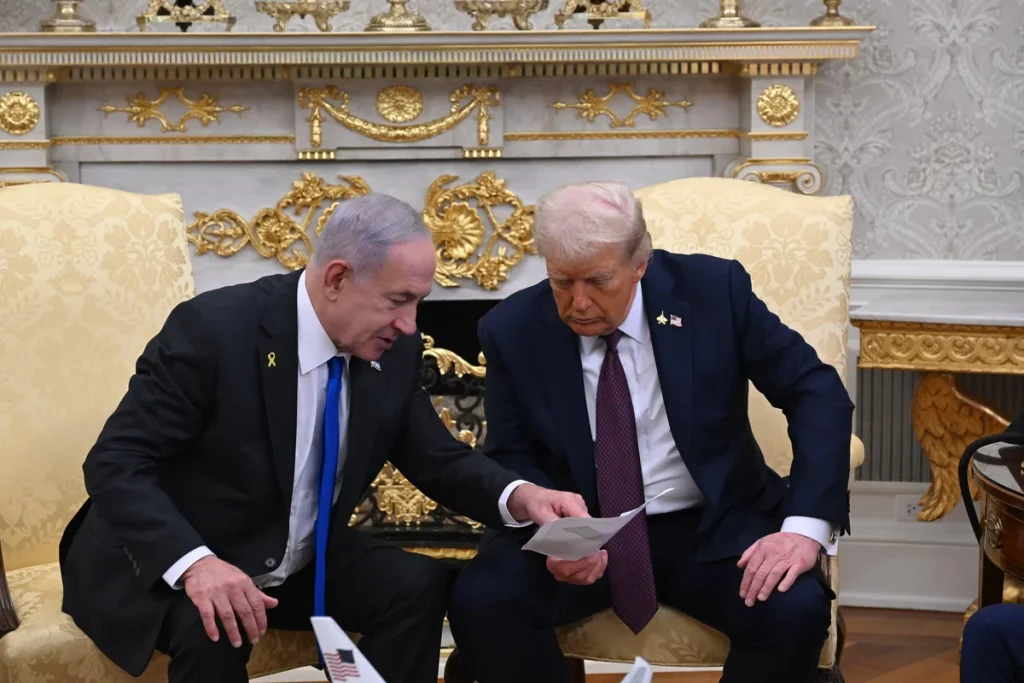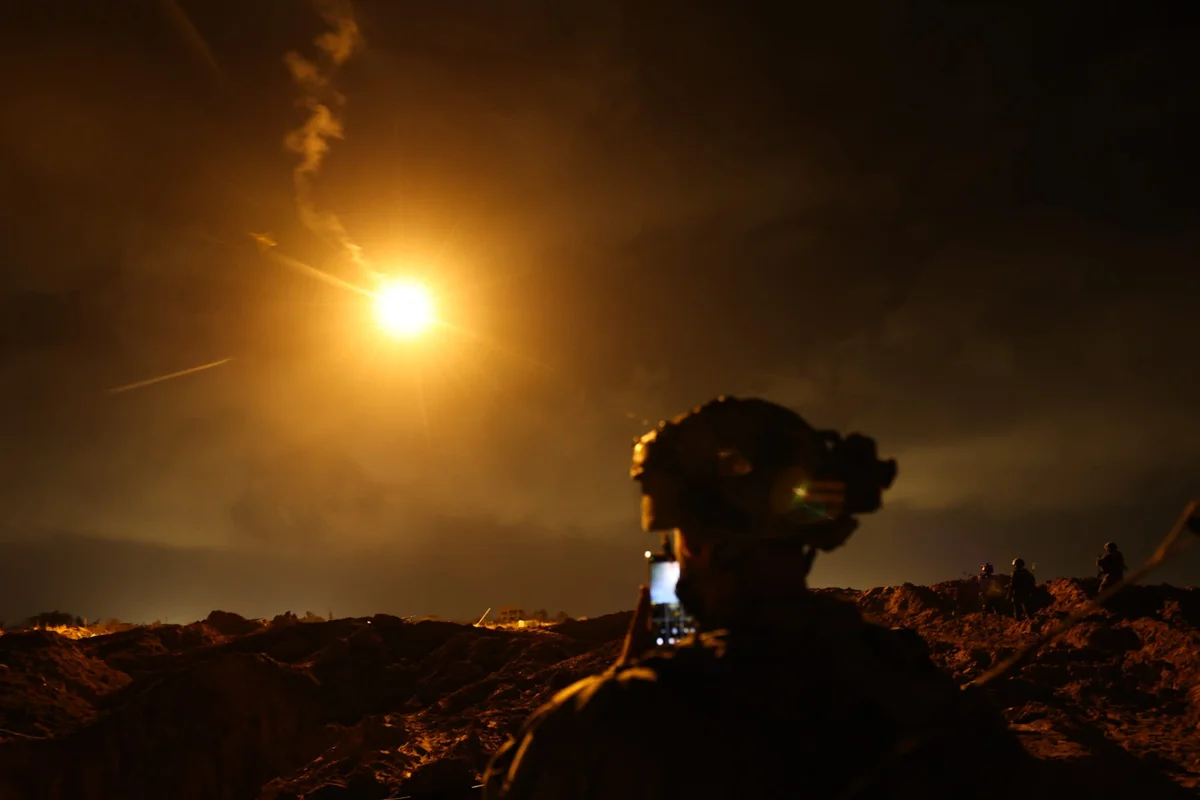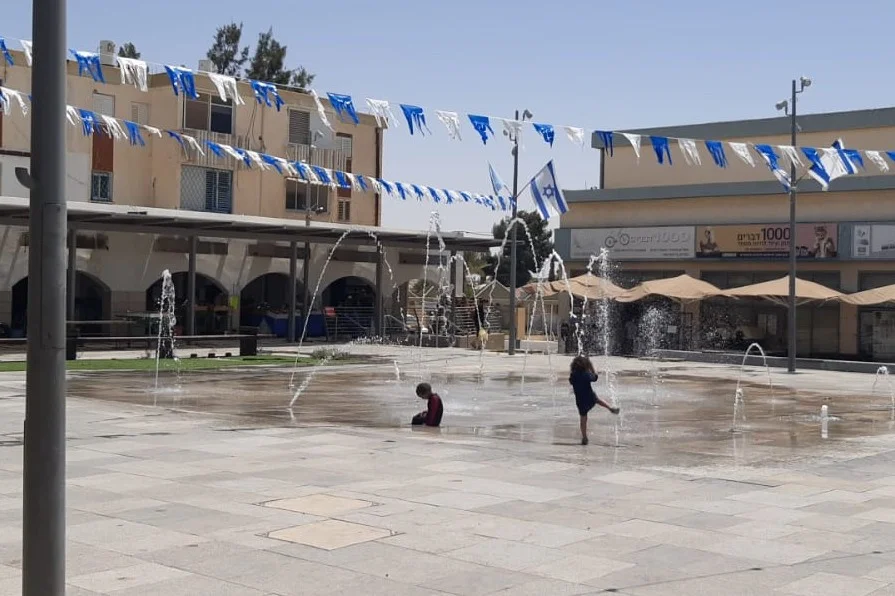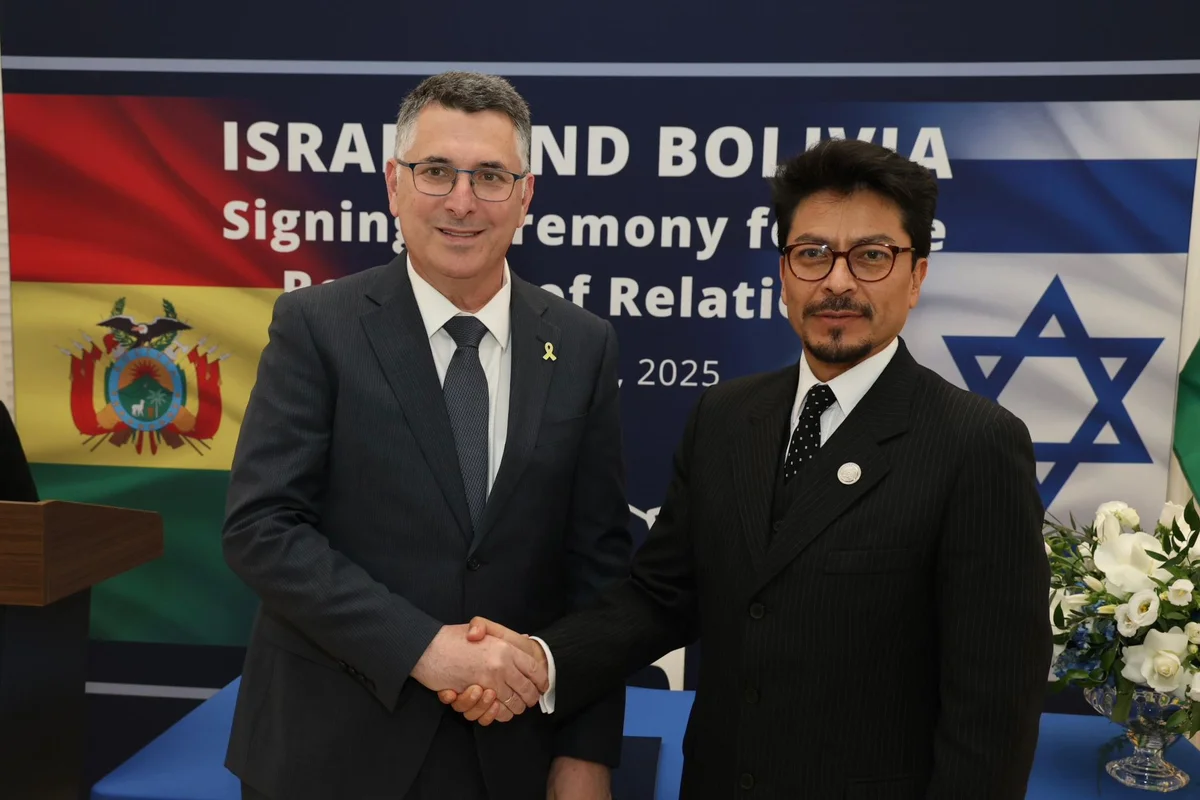Jerusalem, 29 September, 2025 (TPS-IL) — president donald Trump on Monday unveiled an ambitious blueprint to end the war in Gaza, presenting himself not only as mediator but as future overseer of the territory’s reconstruction. Standing beside Israeli Prime Minister Benjamin Netanyahu at the White House, Trump said Israel had accepted the proposal and challenged Hamas to do the same.
“This war could stop right now if both sides agree,” Trump declared. “Within 72 hours of Israel’s acceptance, every hostage must be released. If Hamas refuses, Israel will have my full backing to finish the job.”
The plan — a 20-point document released by the White House — envisions an immediate ceasefire, the return of abducted Israelis, the dismantling of Hamas’s military infrastructure, and a sweeping international effort to rebuild Gaza. It places Trump himself at the head of a new “Peace Council” tasked with administering the Strip during a transitional period, with former British Prime Minister Tony Blair as a key partner.
Netanyahu, who has faced growing pressure to outline a postwar vision, offered his full endorsement. “I support your plan to end the war in Gaza which achieves our war aims,” he told Trump during their joint appearance. “It guarantees that Gaza never again poses a threat to Israel.”
He warned Hamas leaders that rejection would come at a steep price. “This could be done the easy way, or it could be done the hard way. But it will be done,” Netanyahu said.
The document outlines a series of steps beginning with an Israeli withdrawal to agreed lines once the ceasefire is declared. Hostages would be freed within three days, followed by the release of 250 Palestinians serving life sentences and more than 1,700 detainees arrested since October 7, 2023. For every body of an Israeli hostage returned, Israel would repatriate the remains of 15 Palestinians.
Trump said the arrangement offered Hamas members a way out if they abandon terror. Those who disarm and pledge to coexist peacefully would be granted amnesty, while those who choose exile could leave Gaza safely for other countries. “No one will be forced to leave,” Trump said. “But the people who remain must help build a Gaza that is terror-free.”
Large-scale humanitarian relief would follow immediately, overseen by the United Nations, the Red Crescent, and other neutral organizations. Electricity, water, medical supplies, food, and heavy equipment for clearing rubble would enter Gaza as part of what the plan describes as a comprehensive reconstruction effort.
A technocratic Palestinian committee, backed by international experts, would temporarily govern the enclave until the Palestinian Authority carries out reforms enabling it to resume leadership. During this time, an “International Stabilization Force” made up of U.S., Egyptian, Jordanian, and Arab contingents would train local police, patrol the borders, and verify that weapons and tunnels are dismantled.
The plan also contains an economic vision modeled on the Gulf’s so-called “wonder cities,” promising investment zones and preferential trade terms aimed at creating jobs. Trump described the program as a path to “hope and dignity for the residents of Gaza, who have suffered enough.”
Netanyahu framed the proposal as both an ultimatum and an opportunity. “I challenge the Palestinians to take responsibility for their destiny,” he said. “That’s what this plan gives them: responsibility for their own future.”
Regional diplomacy formed a backdrop to the announcement. Earlier in the day, Trump facilitated a phone call between Netanyahu and Qatari Prime Minister Mohammed bin Abdulrahman bin Jassim al-Thani. Netanyahu used the conversation to apologize for Israel’s September 9 strike in Qatar that killed several Hamas operatives and a Qatari guard but missed the group’s senior leadership. Qatar had suspended its mediation role after the incident, and U.S. officials hope Monday’s call may reopen that channel.
Despite Trump’s confidence, major uncertainties remain. Hamas has not issued a response, and the scale of concessions required — from disarmament to acceptance of an international security force — would mark a dramatic break from its past positions. Trump acknowledged the risk. “It’s true Hamas has not yet given its consent,” he said. “But if they refuse, Israel has our full support to destroy the threat once and for all.”
The proposal also hints at a longer political horizon. If reconstruction succeeds and Palestinian reforms are enacted, the framework would “examine conditions for Palestinian independence” and establish a permanent dialogue mechanism between Israel and the Palestinians.
For now, however, the immediate question is whether the guns will fall silent. “The choice is in Hamas’s hands,” Trump said. “Peace can begin this week — or Israel will continue until Hamas is no more.”
Approximately 1,200 people were killed and 252 Israelis and foreigners were taken hostage in Hamas’s attacks on Israeli communities near the Gaza border on October 7. Of the 48 remaining hostages, about 20 are believed to be alive.










